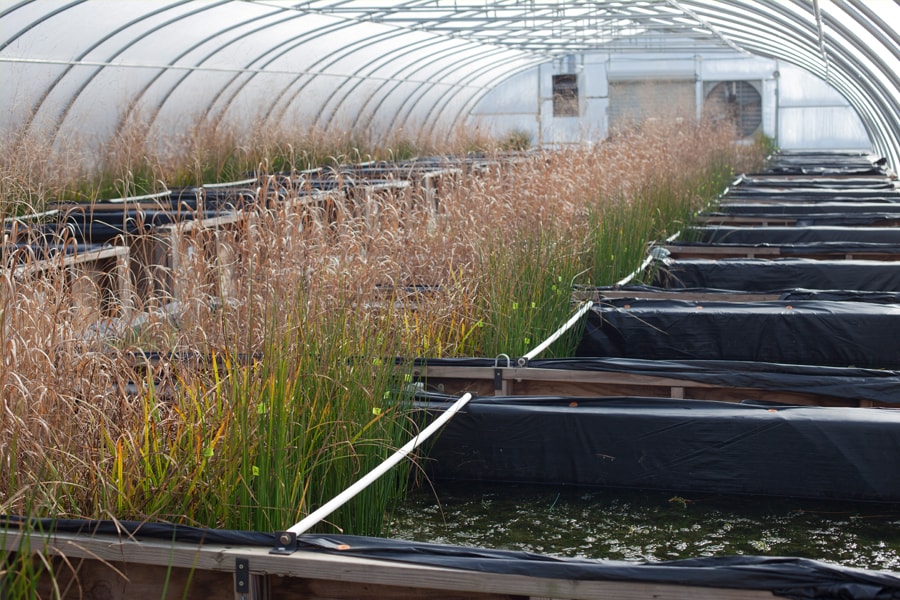
Water Matters to Metal Nanoparticles
When engineered nanoparticles in everyday products like paint, sunscreen and makeup hit the environment, they can cause unintended consequences. Greg Lowry, professor of civil and environmental engineering at Carnegie Mellon University, and Astrid Avellan, a post-doctoral researcher, recently discovered gold nanoparticles may not be as stable as previously thought.
Lowry and Avellan made a breakthrough discovery: gold nanoparticles dissolve in freshwater environments when they come into contact with mircroorganisms found on aquatic plants. During the process, gold ions are released. The ions behave differently from the nanoparticles and could be toxic to some microorganisms. The study did not measure toxicity so this doesn't mean gold nanoparticles are harmful — instead, by better understanding their behavior in biologically active environments, scientists can ultimately use this knowledge to design better nanomaterials. Their findings were published in Nature Nanotechnology.
"This study has opened our eyes to the importance of plants and the plant microbiome in determining the fate of engineered nanomaterials in freshwater environments," Lowry said. "These plants, and biofilms in general, are important sinks for nanomaterials and are a fascinating compartment to study."
The team looked at what causes this transformation and how quickly it occurs. They conducted their tests in what is called a mesocosm — a controlled natural freshwater environment. The mesocosm, housed at the Center for Environmental Implications of NanoTechnology at Duke University, contains soil, sediment, water, plants, insects, fish and microorganisms that live in these natural environments. Avellan and the research team released gold nanoparticles into the mesocosm water in very low amounts every week to mimic long-term, low dose inputs expected from nanomaterial uses.
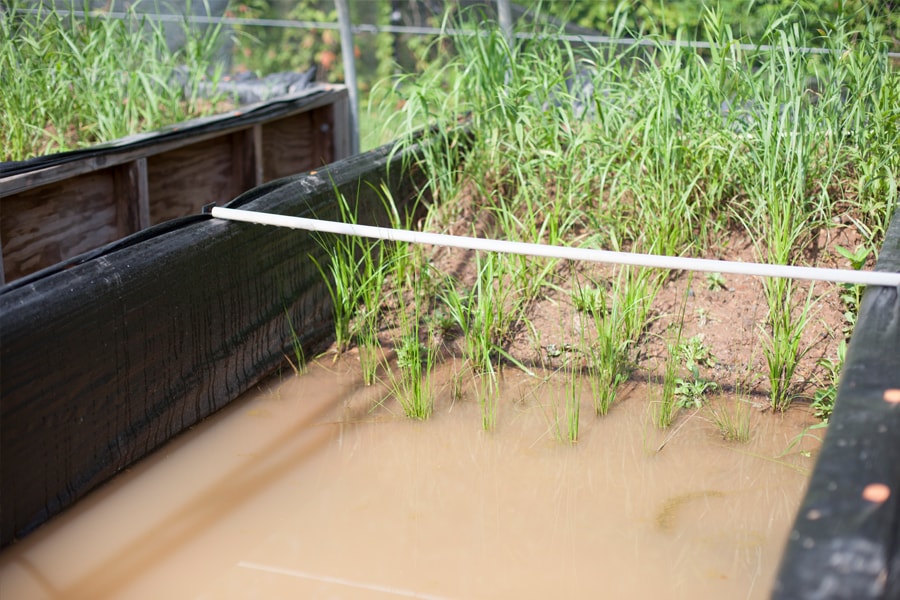
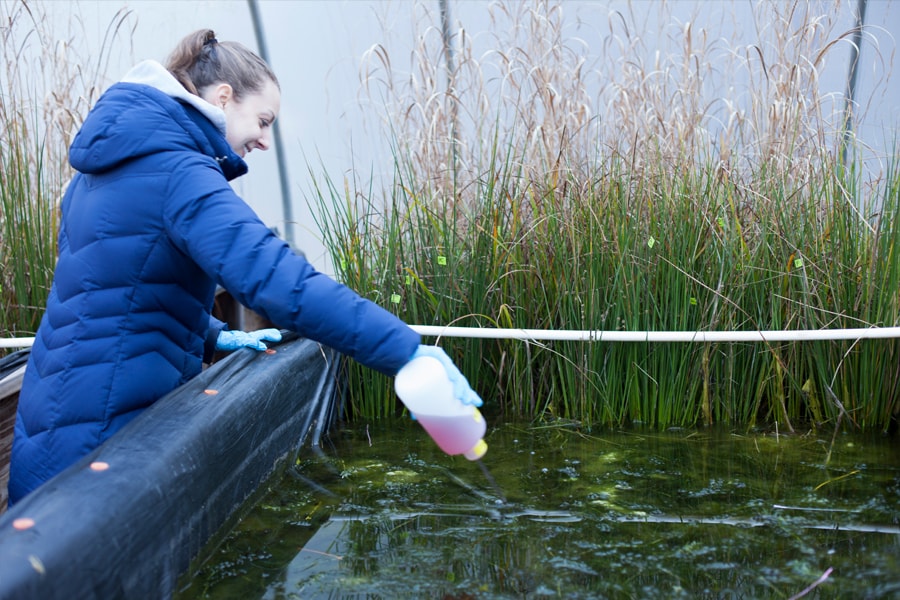
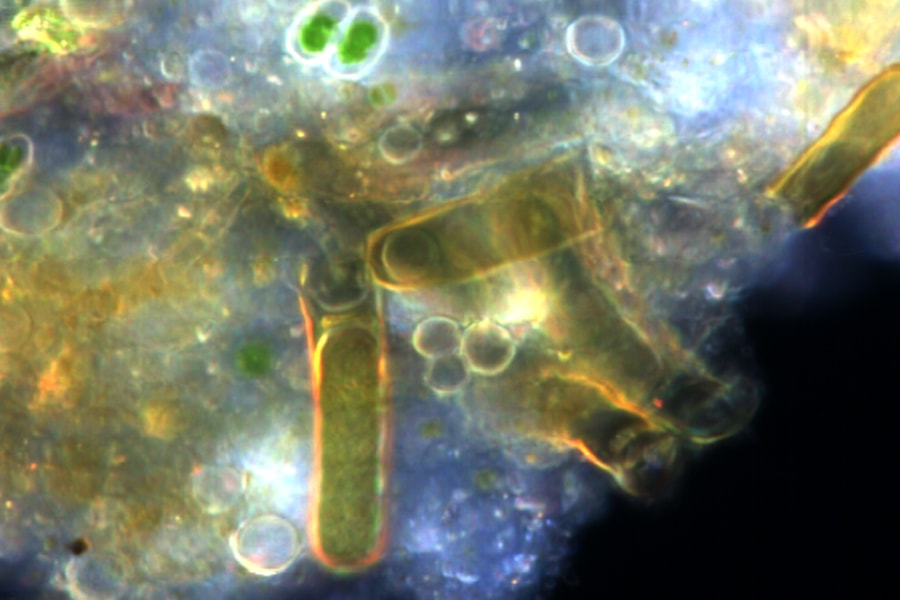
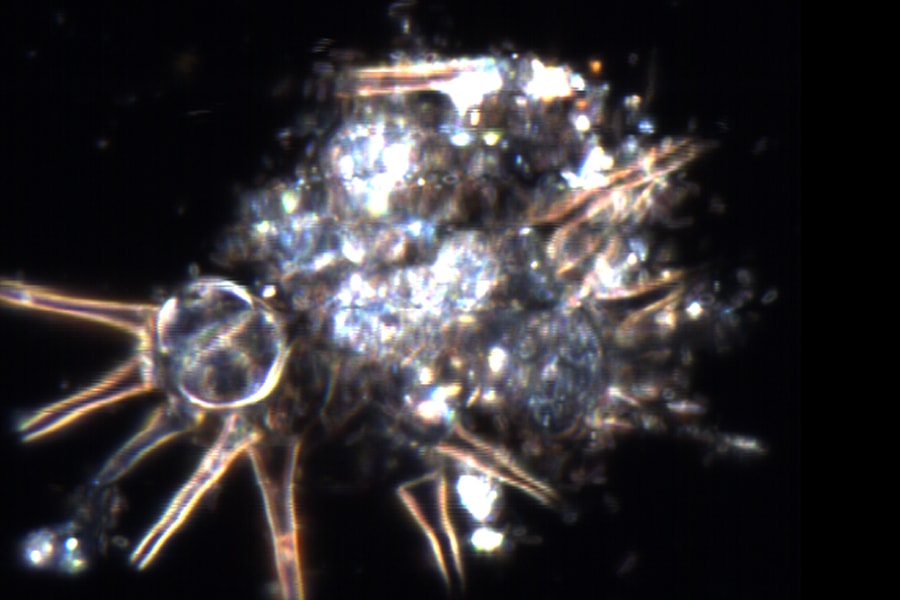
They wanted to see how the nanoparticles would behave in a complex, biologically active ecosystem. After six months they found that 70 percent of the gold was accumulating with the aquatic plants, and that all of the gold nanoparticles had dissolved and changed to other forms of gold. When they took a closer look at the biofilm, or a sticky substance made up of bacteria and microorganisms found on plants, they found that the microorganisms released cyanide that was interacting with the gold nanoparticles. The gold nanoparticles dissolved (or ionized) and formed gold-cyanide along with other gold complexes that remained with the plants.
Nanoparticles are aggregates of atoms forming particles between one and one hundred nanometers, or one-hundredth to one-thousandth of the thickness of a human hair. Their size confers novel properties that benefit many applications: they could treat water better, they could kill bacteria on a wound, they could create stronger but lighter materials.
"We found that gold was accumulating like crazy in the aquatic plants, which was not what we were expecting," Avellan said. "So we dug into that and found that gold was associated with these plants, but it wasn't nanoparticulate anymore."
Gold nanoparticles were thought to be a stable material, and have often been used as a tracer to understand how nanomaterials behave — if you find the nanoparticles then you know where the nanoparticles accumulate. The findings from this paper imply that even relatively inert metal nanoparticles like gold can dissolve when they interact with biofilm in water environments.
"The interactions of nanomaterials with the phytobiome can potentially be leveraged to benefit agriculture," Lowry said. "The research community is only beginning to understand the role of the phtyobiome on plant productivity. This study indicates the potential to design nanomaterials that work together with the phytobiome to improve plant productivity. Successful interventions in agriculture will need to consider how to work synergistically with nature."
Civil and Environmental Engineering Professor Greg Lowry and Postdoctoral researcher Astrid Avellan describe their work looking at how nanomaterials behave in very complex environments using mesocosms that represent freshwater, emergent wetlands.
Though the effects of the gold transformation need to be studied more, it is possible that it could be toxic to some organisms. The ions could move faster and farther away than the nanoparticles, distributing differently in organisms and in the environment. The good news is that now researchers have discovered how and why they dissolve, so we can be smart about future uses and applications of nanoparticles — even leveraging this phenomenon for our benefit.
"Now we know why and in what conditions gold nanoparticles dissolve," Avellan said. "So we can take this knowledge and use it to our advantage to design better materials."